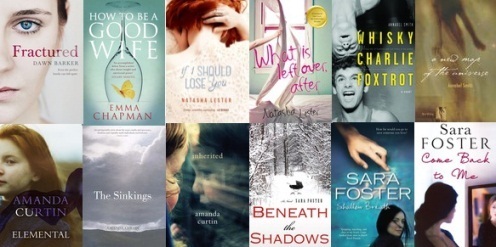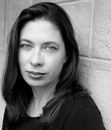Sara Foster's Blog, page 11
April 29, 2013
Wild encounters: meeting my muse
 The Indian Ocean on Sunday was cold enough to steal your breath, but we barely noticed. For the fourth time in my life I had the privilege of swimming with dolphins in their own environment – on this occasion with Rockingham Wild Encounters. There are approximately 200 dolphins in the area, and every day the boat sets out to find them. If they are lucky enough to come across a group willing to socialise, tourists enter the water in small groups and form chains by holding onto each other’s weight belts, while being towed along. This calm entry and relaxed behaviour in the water causes minimal disturbance, and the dolphins respond enthusiastically, swimming close enough that I was half expecting to feel the hefty flick of a fin or tail. There is a ‘no touching the dolphins’ rule on the tour – stipulated because skin contact can pass on harmful bacteria. However, this also means is that these dolphins are used to humans who keep a respectful distance, and as a result they are prepared to come much nearer, and even bring their young close too. At one stage on Sunday we had nine dolphins around us – and a dolphin even stopped and ‘buzzed’ me – just like Nicky the dolphin does to Desi in Shallow Breath (and if you’ve read the book you’ll know what that means!)
The Indian Ocean on Sunday was cold enough to steal your breath, but we barely noticed. For the fourth time in my life I had the privilege of swimming with dolphins in their own environment – on this occasion with Rockingham Wild Encounters. There are approximately 200 dolphins in the area, and every day the boat sets out to find them. If they are lucky enough to come across a group willing to socialise, tourists enter the water in small groups and form chains by holding onto each other’s weight belts, while being towed along. This calm entry and relaxed behaviour in the water causes minimal disturbance, and the dolphins respond enthusiastically, swimming close enough that I was half expecting to feel the hefty flick of a fin or tail. There is a ‘no touching the dolphins’ rule on the tour – stipulated because skin contact can pass on harmful bacteria. However, this also means is that these dolphins are used to humans who keep a respectful distance, and as a result they are prepared to come much nearer, and even bring their young close too. At one stage on Sunday we had nine dolphins around us – and a dolphin even stopped and ‘buzzed’ me – just like Nicky the dolphin does to Desi in Shallow Breath (and if you’ve read the book you’ll know what that means!)
They stayed and swam with us on Sunday because they wanted to – there was no feeding, no tank walls, no training or tricks. When they’d had enough they moved on, and we got back on the boat and tried to find another group who might want to play. We saw them nursing, playing, rooting in the sand for prey, and swimming as a pod, the mothers and aunties hovering protectively over the youngsters. It was beautiful. As always, while in the water with them I briefly forgot everything else.
A dolphin’s use of echolocation gives them a kind of X-ray vision. They can see right through us. Scientists are still examining exactly what they might see, but perhaps it’s more interesting to note what they won’t see. They don’t see us driving our cars, building houses and cities or destroying them. They don’t see the shopping malls, the skyscrapers, our artwork, our aeroplanes, our space rockets, or our televisions. They know nothing of the world wide web. What they might see is an ungainly group of visitors, who can’t hope to match their graceful silhouettes, who breathe heavily through plastic snorkels. Masters of their own environment, they can see right through us.
The dolphins on Sunday reminded me of exactly why I wrote Shallow Breath.

April 28, 2013
Win 12 – TWELVE! – books by Australian authors (ANZ and UK competition)…
Want to the chance to win 12 - yes, TWELVE! – books? Win all 12 fiction titles written by myself, Natasha Lester, Emma Chapman, Dawn Barker, Amanda Curtin and Annabel Smith.
Just click on the books to join in – good luck! (Books posted to Australian and UK addresses only.)
April 23, 2013
A new collaborative blog and my writing process
This is my first post as part of a new collaborative venture with five other fantastic Perth-based writers, in a series we’ve called Writers Ask Writers. Each month we’ll be sharing our thoughts and experiences on the same topics, beginning with our writing process. However, before I get on to that, let me introduce you to the others:
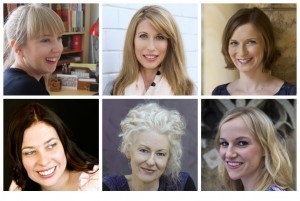
Dawn Barker is the author of the widely praised novel Fractured, which was published earlier this year by Hachette. She is currently hard at work on her second book.
Emma Chapman’s first novel, How to Be a Good Wife, has already been published in the UK and Australia and sold in the US and and across Europe. It has received extensive praise, including a fantastic endorsement by Hilary Mantel!
Amanda Curtin has won numerous awards for her fiction and short fiction, and is the author of a collection of short stories, Inherited, and two novels, The Sinkings and Elemental (the latter will be on sale in seven days – and Amanda is busy counting down with teasers on her blog!)
Natasha Lester won the TAG Hungerford award for her first novel, What is Left Over, After, and released her second book, If I Should Lose You, late last year.
Annabel Smith is the author of two novels, Whisky Charlie Foxtrot and A New Map of the Universe, which was shortlisted for the West Australian Premier’s Book Awards. Her third novel, The Ark, will be released as an interactive digital app later this year.
Writing is often a solitary business so it is a pleasure to be part of this group, and I am already learning a lot from them. You’ll find links to their thoughts on their own writing processes at the bottom of this post, but now I will move on to telling you about mine…
Oh how I wish it were that easy to reflect on my writing process! I remember hearing of a very well-known children’s author who every day, without fail, writes 500 new words and edits the words written the previous day. I lust after the idea of such a structured way of working, but in my semi-chaotic life it rarely happens.
Come Back to Me, my first novel, was written over four years, back when there was no pressure of a deadline. Even then I needed to take a three-month hiatus from my day job as a book editor to really tackle and finish the story. Beneath the Shadows was the first time I’d had a deadline and I also had a new baby by my side, so a combination of adrenalin and terror saw that one through. It was also during this time that Come Back to Me was published, and people asked questions about my ‘writing process’ for the first time. So it was really only at this point that I began to reflect on it.
There are things I have always done as a writer. I have always had ideas in the middle of the night, while sipping coffee at the shops, or on a long journey – those times when my mind has been a little less crowded with the other affairs of the day. I call them ‘snippets’ – they might be a phrase, a word, something to research, the beginnings of a scene – and I write them down immediately and try to file them appropriately so that I can come back to them. Other than that, I usually hold a story in my head for quite a long time without making any formal attempt to write it down. During this time I’m getting to know the different characters, looking at the plot, and basically seeing if this concept is strong enough to gain a hold on me. One thing I don’t have a problem with is ideas for stories – but although they come to me regularly, not all of them are enticing enough for me to want to chase them down and capture them on the page. So I like to let things sit and settle before I write.
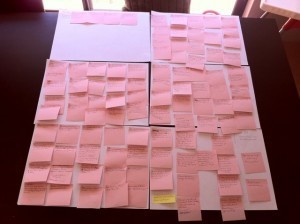
Chapter planning for Shallow Breath with stylish pink Post-Its!
Life ALWAYS gets in the way of writing! Sometimes I let it, because I don’t want to be too obsessive and because my books often develop nicely, and in unexpected ways, while I’m doing other things. However, during this time the core of my story is growing in my mind, like a bubble, and when I feel the pressure of it increasing I know it’s time to sit down, let everything else take a back seat, and start to write. This all sounds very organic – however, it’s not so easy when there’s a publishing contract and a big X on the calendar marking the deadline for Draft 1. So, if it feels like it’s taking too long to start writing, I speed this process up by researching.
Researching a novel is, for me, one of the greatest joys of writing. I want to try to live in my story as much as possible, which means getting inside the heads of the characters, and visiting the locations of my story – in person if I can, otherwise through books and movies, online clips and everything else I can find. Researching a book leads me towards experiences I would never otherwise have, and the opportunity to learn and observe life outside my own little sphere is a blessing, opening my mind even when what I’m looking at is difficult or traumatic – as it sometimes was with Shallow Breath. At times it’s very hard to let the research go and start the story, and with Shallow Breath it required a short period of adjustment to release myself from an avalanche of factual information and get back to my characters’ lives. However, researching a book means I’m always learning about my topic, and gaining new ideas on where I might go with my story.
Once I’ve begun to write those terrible first drafts, I use what I call a ‘building block’ process. This means that when I have written chapter 2, I return to chapter 1 and read the whole thing together to see how it works. I do this all the time, going back over sections or sometimes the whole book, shoring up the foundations of the story as I go, so that I probably read chapter 1 many more times over than I do the final chapter. This doesn’t make my story finished when I get to the end of the first draft, but it does make the sometimes arduous editing stage a little easier. Along the way I’m usually checking all those snippets to see what might fit with the story, or inserting sections I might have written out of order because they were particularly assertive and just wouldn’t wait their turn.
Finally, with deadlines there is little time to get caught up with writer’s block, but that doesn’t stop me from getting stuck. When that happens I go back to planning – I record the outlines of each chapter on a document and try to figure out why I’ve fallen into a fug – because getting stuck is usually a signal to me that the story has gone off track. Writing became a lot easier when I realized I didn’t have to fear these moments, because writing the wrong words might ultimately point me in the right direction.
So, now you know a little more about how I work, check out what the others have to say – I found it fascinating to see how we’re similar in some aspects but very different too.
‘The most important thing for me when I write is knowing that I won’t be interrupted, even if that’s only for an hour.’ Read about Dawn Barker’s writing process here.
‘I imagine I am looking at the book through the eyes of someone I admire: a favourite writer or my agent, and ask myself what they would say about each scene, each sentence.’ Read about Emma Chapman’s writing process here.
‘Process seems to imply a series of steps—linear, organised, focused. What I do is more spidery than that. And it’s been different for each work, although there are threads common to all.’ Read about Amanda Curtin’s writing process here.
‘I try not to edit at all when I’m writing a first draft. I need to get the draft out, fill in the flesh of the story and not slow myself down by polishing words and sentences until they shine like little nuggets of gold. That can happen later, in the redraft.’ Read about Natasha Lester’s writing process here.
‘I may begin with a single scene in mind, a setting, a character. I don’t research, or make notes, or even spend time imagining. I simply sit down and begin writing and see where the story leads.’ Read about Annabel Smith’s writing process here.
February 4, 2013
BOOK LOVE: Searching for the Secret River by Kate Grenville
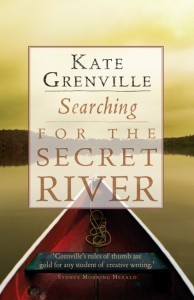 Searching for the Secret River is the extraordinary story of how Kate Grenville came to write her award-winning novel. It all begins with her ancestor Solomon Wiseman, transported to New South Wales for the term of his natural life, but who later became a wealthy man and built his colonial mansion on the Hawkesbury.
Searching for the Secret River is the extraordinary story of how Kate Grenville came to write her award-winning novel. It all begins with her ancestor Solomon Wiseman, transported to New South Wales for the term of his natural life, but who later became a wealthy man and built his colonial mansion on the Hawkesbury.
Increasingly obsessed with his story, Grenville pursues him from Sydney to London and back, and then up the Hawkesbury itself. Slowly she begins to realise she must write about him, and begins to discover what kind of book she will write. Grenville opens the door and invites the reader into her writing room, and tells us about how this novel was formed, the research she did, the false starts she made and the frustrations she experienced.
Having devoured The Secret River, I felt lucky to have this to hand. I am always fascinated by other people’s writing processes, and there were a number of things I really enjoyed about this book. I felt a strong kinship with Kate’s search among archives for pieces of information that would help her put together her story, having just done something similar for Shallow Breath. I thought she did pretty well in not getting the book bogged in details that were probably fascinating to her but perhaps not so much to an outsider – there were only a couple of times I felt I was getting a bit lost in facts and figures.
I really valued the importance Kate placed on visiting the places she was writing about, where possible, to get a feel for them, to try to become a part of the story, and flesh out the small details that would make the book interesting and memorable. I loved envisaging Kate climbing down to stand next to the Thames, and pocketing a bit of old roof tile!
What I also liked very much was how Kate outlines her struggles to find the way to tell this story – the false starts, the realisations, the certainties becoming uncertainties. I think it’s a wonderful thing for all writers to see that a fantastic book comes about through hard work, through being prepared to question your own decisions and change your mind, and that it is not just an effortless slipstream from mind to paper for even the most talented of novelists.
BOOK LOVE: The Secret River by Kate Grenville
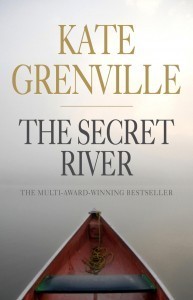 In 1806 William Thornhill, a man of quick temper and deep feelings, is transported from the slums of London to New South Wales for the term of his natural life. With his wife Sal and their children he arrives in a harsh land he cannot understand.But the colony can turn a convict into a free man.
In 1806 William Thornhill, a man of quick temper and deep feelings, is transported from the slums of London to New South Wales for the term of his natural life. With his wife Sal and their children he arrives in a harsh land he cannot understand.But the colony can turn a convict into a free man.
Eight years later Thornhill sails up the Hawkesbury to claim a hundred acres for himself.Aboriginal people already live on that river. And other recent arrivals—Thomas Blackwood, Smasher Sullivan and Mrs Herring—are finding their own ways to respond to them.
Thornhill, a man neither better nor worse than most, soon has to make the most difficult choice of his life.
Inspired by research into her own family history, Kate Grenville vividly creates the reality of settler life, its longings, dangers and dilemmas. The Secret River is a brilliantly written book, a groundbreaking story about identity, belonging and ownership.
Whenever I’m in London I am always captivated by the sense that I am walking through history, that each grandiose building or cobbled alleyway holds a host of hidden stories – some completely lost, others glimpsed through tiny carvings, or street names, or, if you’re really lucky, commemorative plaques. So I loved reading long-ago London brought back to life so vividly. The book is also a stark reminder of the timeless horrors of being poor, and the desperation that often led the destitute to lives of crime. William Thornhill and his family came alive to me from the first page to the last. Kate Grenville absolutely inhabits these characters, and makes it look effortless – a master’s trick, which actually belies an incredible amount of hard work (see also my review of Searching for the Secret River).
Once the story moved to Australia, Grenville’s writing adjusts seamlessly. The story made my senses come alive to the descriptions of the Australian bush. Once Grenville moves on to describing the settlers’ contact with the local Indigenous people, the simple scenes and actions of the characters are pared back to allow the reader to experience for themselves the fear and suspicion, the miscommunications, and the resulting horrors. Thornhill’s thoughts and decisions were frustrating, at times horrifying, but believable. It might be a fictional story but it points to a number of confronting truths.
Beneath the Shadows – go beyond the book and uncover more of the story
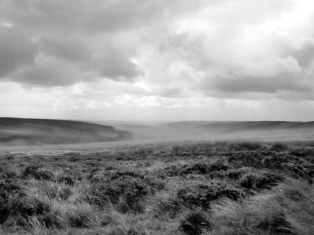
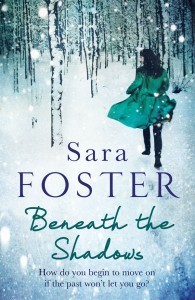 To celebrate the 2-year anniversary of Beneath the Shadows‘ first publication, I have added all the extras to the book onto a brand-new website at www.beneaththeshadows.com. You can find a video of me talking about the creation of the book, with footage from the moors. There’s a ‘bonus chapter’ - a short story from Annabel’s perspective which ties in with the novel. And there’s Annabel’s completed article too, plus an artist’s interpretation of the inside of Grace’s cottage. You can check all this out at www.beneaththeshadows.com.
To celebrate the 2-year anniversary of Beneath the Shadows‘ first publication, I have added all the extras to the book onto a brand-new website at www.beneaththeshadows.com. You can find a video of me talking about the creation of the book, with footage from the moors. There’s a ‘bonus chapter’ - a short story from Annabel’s perspective which ties in with the novel. And there’s Annabel’s completed article too, plus an artist’s interpretation of the inside of Grace’s cottage. You can check all this out at www.beneaththeshadows.com.
January 22, 2013
BOOK LOVE: A Monster Calls by Patrick Ness – from an idea by Siobhan Dowd
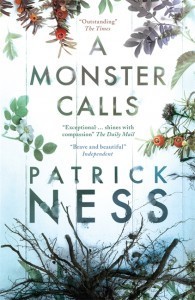 At seven minutes past midnight, thirteen-year-old Conor wakes to find a monster outside his bedroom window. But it isn’t the monster Conor’s been expecting– he’s been expecting the one from his nightmare, the nightmare he’s had nearly every night since his mother started her treatments. The monster in his backyard is different. It’s ancient. And wild. And it wants something from Conor. Something terrible and dangerous. It wants the truth. From the final idea of award-winning author Siobhan Dowd– whose premature death from cancer prevented her from writing it herself– Patrick Ness has spun a haunting and darkly funny novel of mischief, loss, and monsters both real and imagined.
At seven minutes past midnight, thirteen-year-old Conor wakes to find a monster outside his bedroom window. But it isn’t the monster Conor’s been expecting– he’s been expecting the one from his nightmare, the nightmare he’s had nearly every night since his mother started her treatments. The monster in his backyard is different. It’s ancient. And wild. And it wants something from Conor. Something terrible and dangerous. It wants the truth. From the final idea of award-winning author Siobhan Dowd– whose premature death from cancer prevented her from writing it herself– Patrick Ness has spun a haunting and darkly funny novel of mischief, loss, and monsters both real and imagined.
This is classified as a Young Adult book, but its appeal is much, much broader than that. The simple, precise narrative tells the story of Conor, a young boy dealing with a terrible event in his life, who has dreamlike episodes where he faces his ‘monster’. It is a book about the horror of loss, the burden of helplessness, the terror of truth, and the insistent voice of hope. A raw, beautiful story.
January 20, 2013
BOOK LOVE: Wool by Hugh Howey
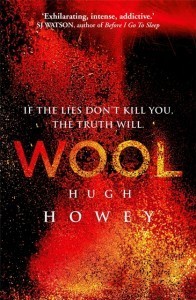 What would you do if the world outside was deadly,
What would you do if the world outside was deadly,
and the air you breathed could kill?
And you lived in a place
where every birth required a death,
and the choices you made could save lives
—or destroy them.
This is Jules’s story.
This is the world of Wool.
From the blurb alone I had a strong suspicion I was going to love this book, and I wasn’t wrong. I’m a big fan of dystopian fiction, I love reading about alternative societies that are so different in some ways and yet intensely familiar in others. Not only has Hugh Howey constructed an absorbing vision of an intimidating future world, he has also created a fast-paced thriller which will ensure you don’t want to put this book down.
January 12, 2013
BOOK LOVE: The Secret Keeper by Kate Morton
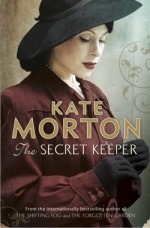 1961 England. Laurel Nicolson is sixteen years old, dreaming alone in her childhood tree house during a family celebration at their home, Green Acres Farm. She spies a stranger coming up the long road to the farm and then observes her mother, Dorothy, speaking to him. And then she witnesses a crime.
1961 England. Laurel Nicolson is sixteen years old, dreaming alone in her childhood tree house during a family celebration at their home, Green Acres Farm. She spies a stranger coming up the long road to the farm and then observes her mother, Dorothy, speaking to him. And then she witnesses a crime.
Fifty years later, Laurel is a successful and well-regarded actress, living in London. She returns to Green Acres for Dorothy’s ninetieth birthday and finds herself overwhelmed by memories and questions she has not thought about for decades. She decides to find out the truth about the events of that summer day and lay to rest her own feelings of guilt. One photograph, of her mother and a woman Laurel has never met, called Vivian, is her first clue.
The Secret Keeper explores longings and dreams, the lengths some people go to fulfill them, and the strange consequences they sometimes have. It is a story of lovers, friends, dreamers and schemers, play-acting and deception told against a backdrop of events that changed the world.
I was keen to get stuck in to this book after I heard Kate Morton talking about it at Joondalup Library back in November, but I forced myself to wait until Christmas so I had enough time. I loved The Shifting Fog and the Forgotten Garden, and in this, Kate’s fourth novel, there are more intriguing characters, a few superb secrets that last all the way through, and effortless shifts of character perspectives, which I so enjoy in stories.
There is a delicacy to Kate’s language that I love. She doesn’t fill a sentence unnecessarily, but on so many occasions her word choice enhances her descriptions beautifully. As as result it’s easy to get lost in her gentle style of storytelling. I was absorbed into the characters’ stories – I went over all the options in my mind and so I did guess some of the big twists and turns, but I never settled on anything with too much certainty for it to spoil the intrigue for me. The novel really brings the Blitz to life as well. (I hadn’t realised just how many bombs were dropped on London until I read an article in the Daily Mail about a month ago – the word Blitz really does sum it up.)
My only criticism, being very nit-picking, is that I found it extremely convenient that Laurel and Gerry could research so much of their mother’s past because everyone involved seemed to have had their diaries and letters placed in museum archives. But this is a very small quibble, and overall I thoroughly enjoyed The Secret Keeper. You can find out more about all Kate’s books at www.katemorton.com.
I’m counting this as one of my reads for the Australian Women Writers Challenge 2013.
December 31, 2012
Happy New Year!
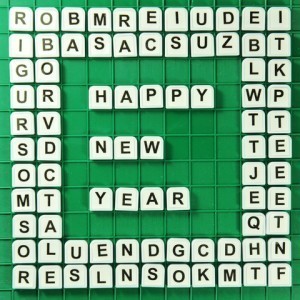 I hope you have all had a fantastic Christmas and New Year. I’ve spent the last week enjoying some much-needed R&R with my family, and I’ve also loved having time to read. As a result, there will be more Book Loves coming up shortly!
I hope you have all had a fantastic Christmas and New Year. I’ve spent the last week enjoying some much-needed R&R with my family, and I’ve also loved having time to read. As a result, there will be more Book Loves coming up shortly!
I’m already busy planning everything that’s going to keep me busy over the next few months: there’s a new book that needs writing, events at UWA Extension, South Perth library and the Perth Writers Festival coming in February, and Come Back to Me and Shallow Breath should be available in new territories on Amazon Kindle in the coming weeks.
2012 finished on a high. Monique from Write Note Reviews listed Shallow Breath as one of her favourite reads of the year, and Susan from An Adventure in Reading gave it a wonderful review. On Saturday it was also Pick of the Week in the Sydney Morning Herald – fantastic!
I was really touched when Anna Lee Huber, an author in the US, tweeted that Beneath the Shadows had been one of her top reads of 2012. It means a lot to me when people take time out of their day to let me know they have enjoyed one of my books, and I’d like to thank everyone who has been in touch over the last year.
For 2013 I’ll be signing up to the Australian Women Writers Challenge. I nearly did last year, but I was into the intense writing process of Shallow Breath and couldn’t see where I’d get free time to read a book that wasn’t research! The AWW challenge began last year, the brainchild of Elizabeth Lhuede, and it has been fantastic watching everybody taking part and helping to promote all those brilliant books out there by Australian women. I’ve signed up for the ‘Miles’ challenge, to read 6 books, although I’m secretly hoping I’ll make it to ‘Franklin’ status. If you go on to the AWW website you’ll see there’s an absolute smorgasbord of choice, and I’m excited to be taking part this time. I’m also looking forward to seeing who takes out the inaugural Stella Prize – my money at the moment is on ML Stedman for her fabulous book The Light Between Oceans.
In 2013 I’m keen to keep spreading awareness of the conservation projects that form the backdrop to Shallow Breath – particularly the plight of orangutans in Indonesia, the dolphin atrocities in Taiji, and the elephant genocides in Africa. And I hope I have more opportunity to be involved in projects and fundraisers run by Room to Read, who are doing fantastic work helping children’s education in the developing world. All in all, it’s shaping up to be a busy year!
Wishing you all many hours of happy reading in 2013.
Sara x

